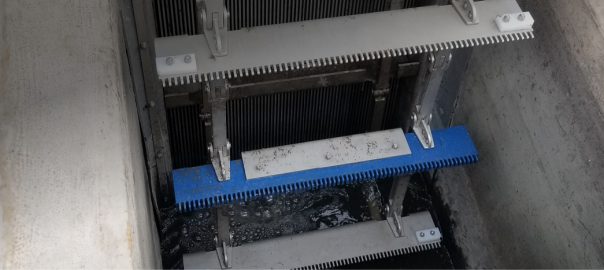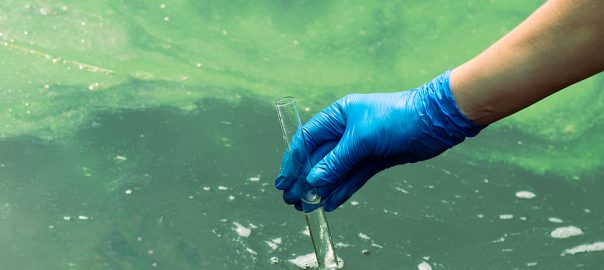
Does your wastewater treatment plant have trash rakes installed to clean racks and screens from the trash that collects as wastewater comes in from sewers? Why is this important? It keeps the lines from clogging with unnecessary items and dead animals that have made their way into sewers. It also helps prevent excess strain on pumps, pipes, and other wastewater treatment equipment.
Trash rakes work with your existing trash racks and screens. If you don’t have them installed, you should. If you do and they’re not working effectively, it’s important to look at making upgrades to ensure your sewer system or stormwater drains don’t back up because the water can’t get through.
People Flush Items That Were Never Meant to be Flushed, or They Put Them Down Sinks
People don’t always realize that the items they’re flushing are incredibly damaging. Those items need to be screened before they cause equipment failures that can take time and money to repair. Sometimes, the items that get flushed are believed to be flushable. Flushable wipes are one of the most common. While the packaging says they’re flushable, they do not break down easily.
That’s just a start. Pouring grease down a drain creates fatbergs that clog lines and may break off into chunks and make their way into wastewater treatment plants to further clog lines. In New York City, the city reported that of the 2,382 sewer backups in 2018, three out of four of them were caused by grease buildup. At that point, one sewer line repair cost as much as $15,000.
Plastic tampon applicators, wrappers, condoms, pads, diapers, and cat litter are other problematic items. There are surprising items that you wouldn’t expect, too. The American Chemical Society reported that 21% of contact wearers flush their disposable contacts rather than throwing them into the trash as they should. It’s estimated that 3 million contacts end up in wastewater treatment plants.
Some wastewater treatment plants also receive stormwater when it rains. In facilities where stormwater and sewer water both come into the plant, a trash rack can capture leaves, branches, rocks, and trash like bottles, cans, and plastic bags that travel into storm drains and to wastewater treatment plants or rivers, lakes, and oceans.
To prevent damage from these items, they get caught up on trash racks and screens. Rakes are used to rake or scrape debris from the racks or screens, move them to dumpsters, and move them to landfills or incinerators.
Trash rakes also help clean the screens and trash racks to ensure water continues to flow into the plant. If too much trash builds up, the water flow diminishes and that could lead to back-ups in the sewer lines.
Types of Trash Rakes
What type of trash rake is best for your wastewater treatment plant? It comes down to your current equipment and plant size. Generally, there are two raking systems: cable operated and hydraulic
- Cable Operated
Catronic systems are heavy-duty systems using a rake head and cable winch that can clean trash racks with depths of 200 feet and lift up to 20 tons of materials. They’re energy-efficient and can be retrofitted to existing structures. They’re also easy to maintain as the components are above the water during standby.
Monorail systems are best for facilities that have several bar racks. The Catronic Monorail systems are suspended above trash racks on a monorail. The trash rake moves along the monorail and drops down using the cable system. It’s then pulled back up to move the trash into an awaiting dumpster.
The Catronic Monorail system can be retrofitted to work with existing trash racks. It’s energy-efficient and works effectively. Maintenance is performed once the system is parked away from the rack. As the rake travels along the monorail to areas away from the operating deck, trash isn’t accidentally dropped into inconvenient areas.
Your options are:
- Catronic Series – Add optional jib cranes or hydraulic grab cranes for heavy debris that’s floating on the surface.
- Monorail Series – Combines the rake head and cable trolley system.
- Hydraulic
Hydraulic systems telescope to the trash rack to clean it. As there is no need for a monorail or guide, it can clean at better angles (up to 90 degrees), which makes it a favorite choice for wastewater treatment plants. You can get stationary, swiveling, or traversing rakes. You can get single gripping jaws, triple jaws, or orange peel grapples that can go hundreds of feet down.
Some of the advantages of hydronic trash rakes include that operators can adjust the pressure on the trash screen for optimal cleaning. All mechanical components are above the water for easy maintenance, plus there are no chains, guides, or sprockets to wear out. You can get Hydronic trash rakes in galvanized steel or stainless steel.
Your options are:
- Hydronic H Series – Horizontal design that pivots into a bar rack and travels sideways and is most commonly used in river water intakes at water treatment plants to protect aquatic life
- Hydronic K Series – Stationary, Swiveling, or Traversing rakes that can clean at depths of up to 100 feet.
- Hydronic T Series – Telescoping rakes that can either be stationary or traversing.
- Hydronic Multifunctional – A traversing rake with manual, semi-automatic, or fully automatic articulating or combination articulating and telescoping rake to clean at depths of up to 150 feet.
The goal of trash and screen rakes is to capture and remove debris before it clogs lines or damages equipment. With so many consumers and businesses flushing items that shouldn’t go down the toilet, trash and screen rakes are a necessary investment. How do you know what you need?
When you’re considering your options, look for automated trash rakes. In Portland, Oregon, older trash rakes weren’t doing their job with the flood management system and kept shutting down. Employees had to go out on a barge to clear the grates.
The city upgraded to trash rakes that could lift a minimum of 2,000 pounds instead of the 1,250 pounds the current system was managing. They also needed a trash rake that fit the required dimensions. They ended up choosing five Lakeside Muhr Model T-260 Hydronic T trash rakes. Cleaning time was greatly reduced and efficiency at the plant greatly improved.
Work With a Professional in Water Treatment
The easiest way to design a trash rake system that does what you need is by working with a professional. Lakeside Equipment has a complete line of trash and screen rakes. We’ve been engineering, developing, and providing the water treatment systems municipalities and industries need since 1928. We have a lot of experience in designing cost-effective, efficient systems.
Talk to us to learn more about your options that will complement your current equipment and protect the piping, pumps, and other wastewater treatment from costly damage. Contact your local sales representative today.





